Which One Is Better? - Oil Paint vs. Acrylic Paint
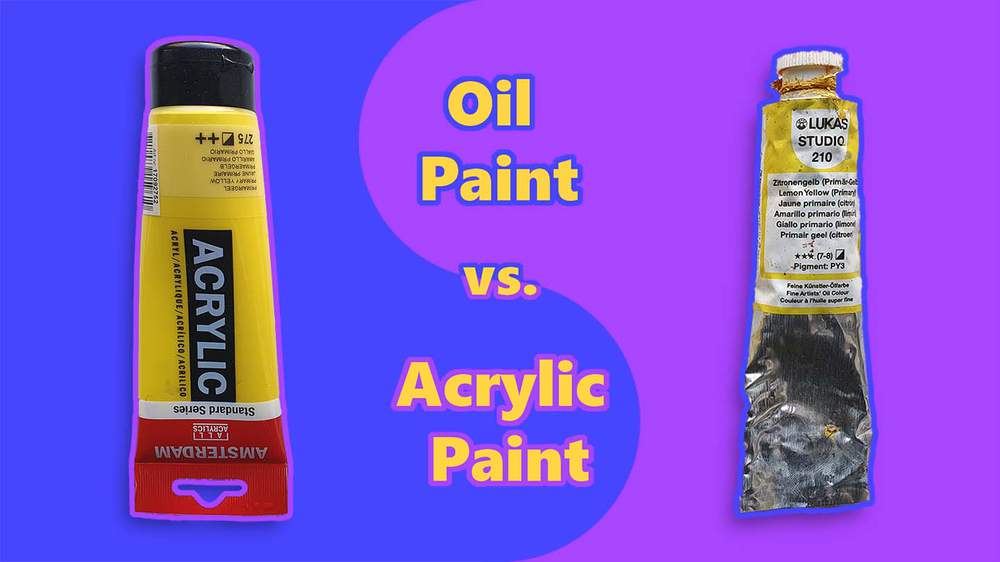
The choice between oil paint and acrylic paint depends on your style, the desired visual effects, and practical considerations such as drying time and cost.
Oil paint is typically better for techniques that require a longer drying time, such as glazing and blending, due to its slow-drying nature. It's also ideal for creating depth and luminosity in subjects like portraits and landscapes.
On the other hand, acrylic paint is better for techniques that benefit from quick drying times, such as layering and impasto. It's also great for subjects that require bold colors and sharp details, like abstract art and pop art. Acrylics are also more suitable for outdoor painting due to their durability and resistance to weather conditions.
Let's dive into the details of what makes each of these types of paint suitable for different styles, techniques, and other considerations.
A Short Overview of Oil Paint
Oil paint is a slow-drying paint made from particles of pigment suspended in an oil, usually linseed oil. It's known for its rich, vibrant colors and flexible texture. The slow drying time allows artists to blend colors and make changes over several sessions. However, it requires careful handling due to its long drying time and certain safety concerns.
A Short Overview of Acrylic Paint
Acrylic paint is a fast-drying paint made of pigment suspended in an acrylic polymer emulsion. It's known for its bright, vibrant colors and versatility in consistency. The quick drying time allows artists to work rapidly and apply multiple layers of paint in a single session. However, colors can darken slightly as they dry. Acrylic paint is water-resistant when dry, easy to clean up, and generally more affordable and environmentally friendly than oil paint.
Now let's compare the properties of both types of paint more in-depth.
Composition and Properties

Oil Paint
Oil paint is a type of slow-drying paint that consists of particles of pigment suspended in a drying oil, commonly linseed oil. The viscosity of the paint may be modified by the addition of a solvent such as turpentine or white spirit, and varnish may be added to increase the glossiness of the dried oil paint film.
Oil paints do not dry by evaporation like watercolors or acrylics. Instead, they dry by oxidation, a chemical reaction where the oil binder reacts with oxygen in the air. This process gives oil paint a much longer drying time than other types of paint, which allows the artist to manipulate the paint over several sessions and provides a greater depth of color and texture.
Acrylic Paint
Acrylic paint is a fast-drying paint made of pigment suspended in acrylic polymer emulsion and plasticizers, silicon oils, defoamers, stabilizers, or metal soaps. Most acrylic paints are water-based, but become water-resistant when dry.
Acrylic paints dry quickly because of their water-based solvent. Thin layers of acrylic paint will dry in a matter of minutes, while thicker layers may take an hour or two. This fast drying time can be an advantage for artists who want to work quickly, but it also requires them to make decisions more rapidly than when using oil paint.
Similarities and Differences
While both oil and acrylic paints are used for artistic expression, there are some key differences in their composition and properties:
Composition: Oil paints are made with an oil binder, usually linseed oil, while acrylic paints are made with an acrylic polymer emulsion. This difference in binders leads to many of the differences in the properties of the two types of paint.
Drying Time: Oil paints have a much longer drying time than acrylic paints due to the oxidation process. This allows artists more time to work with the paint, blend colors, and make changes. On the other hand, the quick drying time of acrylic paints allows for faster work but requires quicker decision-making.
Texture and Consistency: Oil paints have a smooth, buttery consistency and can be built up to create texture, known as impasto. Acrylic paints, on the other hand, have a wide range of textures and consistencies and can mimic the qualities of other types of paint.
Color Vibrancy and Opacity

Oil Paint
Oil paints are renowned for their richness and depth of color. The oil binder allows for a high concentration of finely ground pigment, which results in vibrant, intense colors. The depth of color in oil paint is also influenced by the way light interacts with the layers of paint. Light penetrates the upper layers of paint and is reflected by the lower layers, giving the colors a luminous quality that can appear to glow from within.
The opacity of oil paint, or its ability to cover underlying layers, varies depending on the pigments used and the medium they are suspended in. Some pigments, like titanium white, are naturally opaque, while others, like alizarin crimson, are more transparent. Artists can control the opacity of their oil paint by adding more or less medium to the paint. Adding more oil will increase the transparency of the paint while using the paint straight from the tube will result in more opaque strokes.
Acrylic Paint
Acrylic paints are known for their bright and vibrant colors. The pigments used in acrylic paint are often very pure and clear, resulting in colors that are bold and striking. The fast-drying nature of acrylic paint also means that colors maintain their vibrancy after drying, without the yellowing that can sometimes occur with oil paints over time.
The opacity of acrylic paint can vary greatly depending on the pigments used and the medium they are suspended in. Some pigments, like cadmium, are naturally opaque, while others, like quinacridones, are more transparent. Artists can also control the opacity of acrylic paint by adding a medium. Adding a gloss medium, for example, can increase the transparency of the paint while adding a modeling paste can increase the opacity.
Similarities and Differences
Both oil and acrylic paints are known for their vibrant colors and varying levels of opacity. However, there are some key differences:
Color Vibrancy: While both types of paint are known for their vibrant colors, oil paints are often noted for their depth of color and luminous quality. Acrylic paints, on the other hand, are known for their bright, clear colors.
Opacity: Both oil and acrylic paints offer a range of opacities, but the methods for achieving desired levels of opacity differ. With oil paints, the level of opacity can be controlled by the amount of medium added, while with acrylics, different mediums can be used to adjust the opacity.
Techniques and Application

Oil Paint
Oil paint is known for its slow drying time, which allows artists to blend colors directly on the canvas over several sessions. This results in smooth gradients and subtle color transitions that can add depth and realism to a painting. Some of the techniques unique to oil paint include:
Glazing: This involves applying thin layers of transparent oil paint over a dried, opaque layer of paint. The light passes through the glaze and is reflected off the opaque layer below, giving the colors a luminous quality.
Impasto: This is where thick, textured strokes of paint are applied, often directly from the tube. The thick application of paint can create a three-dimensional effect on the canvas.
Acrylic Paint
Acrylic paint is known for its fast drying time, which allows artists to work quickly and apply multiple layers of paint in a single session. Some of the techniques unique to acrylic paint include:
Washing: Acrylics are water-based, so they can be thinned with water to create a wash of color, similar to watercolor techniques.
Dry Brushing: This involves using a dry brush to apply paint to the canvas, resulting in a textured, almost scratchy effect.
Similarities and Differences
While both oil and acrylic paints can be used to create a wide range of effects, there are some key differences in their techniques and applications:
Drying Time: Oil paints have a much longer drying time than acrylic paints. This allows artists who use oil paint more time to blend colors and make changes. However, it also means that they have to wait longer for each layer to dry. On the other hand, the quick drying time of acrylic paints allows for faster layering of colors.
Texture and Techniques: Both oil and acrylic paints can be used in a variety of techniques to create different textures. However, the slow drying time of oil paints makes them particularly well-suited to techniques like glazing, where many layers of paint are applied over time. Acrylic paints, on the other hand, are great for techniques that take advantage of their fast drying time, like washing and dry brushing.
Durability and Longevity
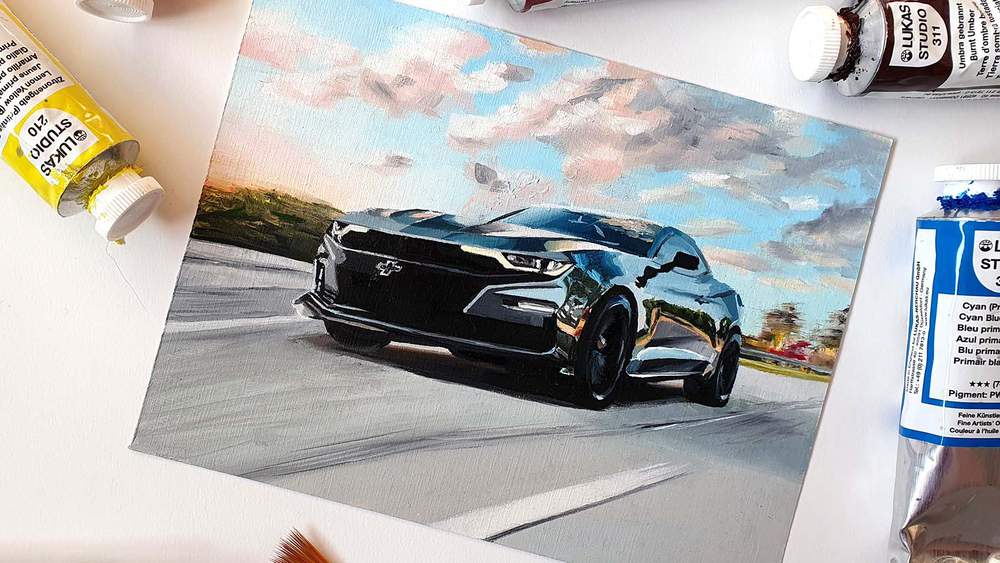
Oil Paint
Oil paint is known for its durability and longevity. The slow drying process of oil paint allows it to form a hard, protective film that is resistant to water and light damage. This makes oil paintings very durable and able to withstand the test of time. In fact, there are oil paintings that have survived in good condition for hundreds of years.
However, the durability of oil paint can also depend on the thickness of the paint layers and the conditions in which the painting is stored. Thick layers of oil paint can crack over time if not properly applied, and oil paintings can be sensitive to changes in temperature and humidity.
Acrylic Paint
Acrylic paint is also very durable and long-lasting. Once dry, acrylic paint forms a flexible film resistant to water and light damage. This makes acrylic paintings very durable and able to withstand the test of time.
Acrylic paint is also less sensitive to changes in temperature and humidity than oil paint, which can make it more durable in certain conditions. However, acrylic paint can darken slightly as it dries, which can affect the final appearance of the painting.
Similarities and Differences
Both oil paint and acrylic paint are known for their durability and longevity. They both form a protective film that is resistant to water and light damage, making both types of paintings able to withstand the test of time.
The main difference between the two is their reaction to environmental conditions. Oil paint can be more sensitive to changes in temperature and humidity, and thick layers of oil paint can crack over time if not properly applied. On the other hand, acrylic paint is less sensitive to environmental conditions but can darken slightly as it dries.
Environmental Impact and Safety
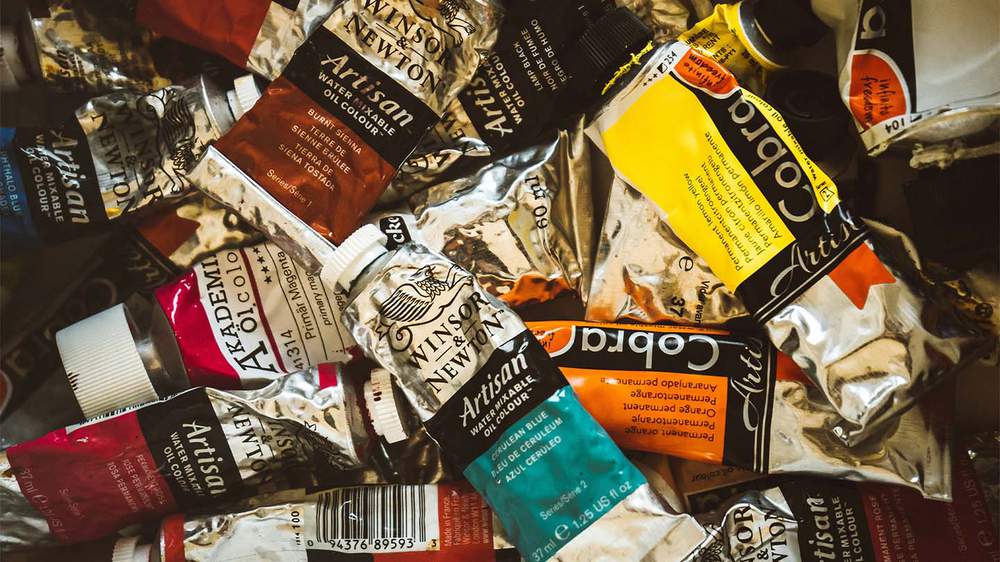
Oil Paint
Oil paint, while loved for its smooth application and vibrant colors, does have some environmental and safety concerns:
Some oil paints contain heavy metals like lead, cadmium, and cobalt, which are harmful if ingested or inhaled. It's important for artists to avoid eating, drinking, or smoking in their studio to prevent accidental ingestion.
Used solvents, leftover paint, and rags soaked in oil paint are considered hazardous waste and should be disposed of responsibly.
The solvents used in oil paint can evaporate into the air and cause health issues like dizziness and nausea. Good ventilation in the studio is crucial.
Acrylic Paint
Acrylic paint is water-based and dries quickly, but it also has some environmental concerns:
Acrylic paint can contain harmful substances such as formaldehyde and heavy metals. While these are not usually harmful in small amounts, they can be dangerous if ingested or inhaled in large quantities.
Like oil paint, leftover acrylic paint and used brushes or rags should be disposed of responsibly.
Acrylic paint can contribute to VOC (Volatile Organic Compounds) emissions, which can affect indoor air quality.
Similarities and Differences
While both types of paint have potential environmental and safety concerns, there are some key differences:
Oil paints often contain heavy metals and require harsh solvents for cleanup, which can be harmful if not handled properly.
Acrylic paints are water-based and do not require harsh solvents for cleanup. However, they can still contain harmful substances and contribute to VOC emissions.
In both cases, using environmentally preferred paints, practicing safe handling and disposal methods, and maintaining good ventilation can help mitigate these risks.
Cost and Accessibility
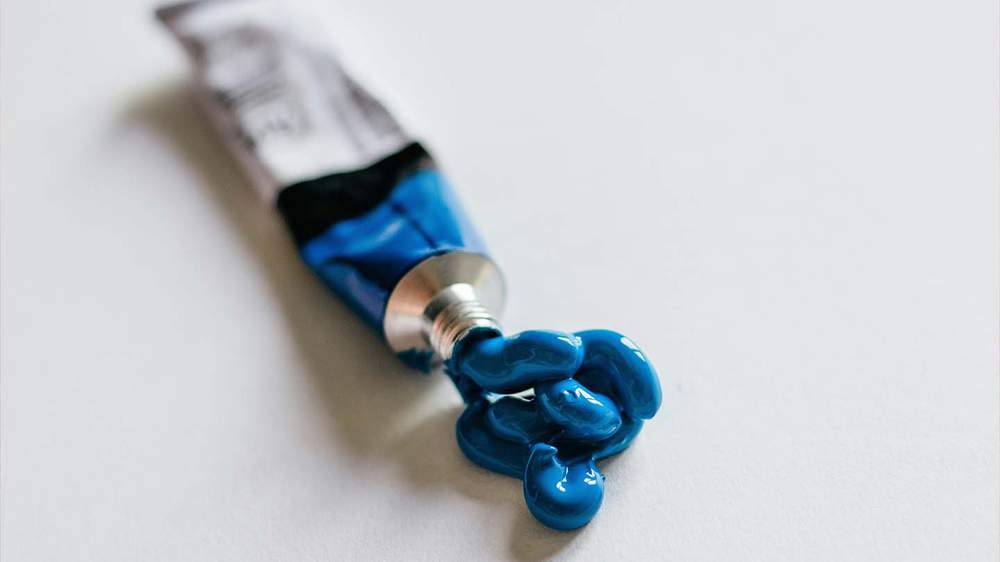
Oil Paint
Oil paint is known for its high quality and rich, vibrant colors. However, it can be quite expensive. The cost of oil paint can vary greatly depending on the quality of the paint and the pigments used. High-quality oil paint with a high pigment load can cost quite a bit making the startup costs relatively high.
The cost of oil paint is largely due to the cost of the pigments used. Some pigments are incredibly expensive, costing more than their weight in gold. Despite the high cost, oil paint is widely available in art supply stores and online.
Acrylic Paint
Acrylic paint is generally more affordable and accessible than oil paint. It's easy to find in most craft and art supply stores, and there's a wide range of quality and price points available. Professional-grade acrylic paints with high-end pigment quality can be pricier than other brands.
Acrylic paint is also safer and easier to work with than oil paint, which makes it a popular choice for beginners, schools, and crafters.
Similarities and Differences
Both oil and acrylic paints are widely used and accessible, but there are some key differences in cost and accessibility:
Cost: Oil paint tends to be more expensive than acrylic paint due to the cost of the pigments and the complexity of the production process. On the other hand, acrylic paint is generally more affordable, making it a popular choice for beginners and hobbyists.
Accessibility: Both types of paint are widely available in art supply stores and online. However, acrylic paint is often more readily available and comes in a wider range of colors and brands.
Which Paint is Best for Your Needs?

Choosing between oil paint and acrylic paint can be hard. Both paints have good and bad points. The best paint for you depends on what you want to paint, how you want to paint, and how much money and time you have. Here are some things to think about:
- Style and Technique: Do you like to paint slowly and blend colors smoothly, or paint fast and layer colors boldly? Do you paint realistic or abstract things? Do you use special techniques like glazing, impasto, washing, or dry brushing?
- Visual Effects: Do you want your colors to be deep and glowing, or bright and clear? Do you want your paint to be shiny or dull? Do you want your paint to be thick or thin?
- Practical Considerations: How much time do you have to paint and wait for your paint to dry? How much space do you have to store your paint and your paintings? How much money do you want to spend on your paint and your tools? How do you feel about the environmental and safety issues of your paint?
Here are some general tips based on these factors:
Oil paint is good for painting slowly and blending colors smoothly. It makes your colors deep and glowing. It is good for painting realistic things like portraits and landscapes. It is good for glazing, where you put thin layers of paint over each other. However oil paint is expensive, needs a lot of care and maintenance, and has some environmental and safety problems.
Acrylic paint is good for painting fast and layering colors boldly. It makes your colors bright and clear. It is good for painting abstract things like pop art and geometric shapes. It is good for washing and dry brushing, where you use water or a dry brush to make different effects. However acrylic paint can change color slightly as it dries, needs quick decision-making, and has some environmental and safety problems.
Both paints have their pros and cons, and the best paint for you depends on your personal preferences, goals, and circumstances. The best way to find out is to try both paints and see what you like.
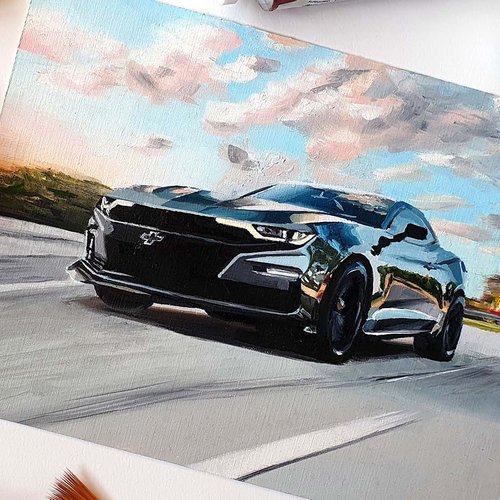
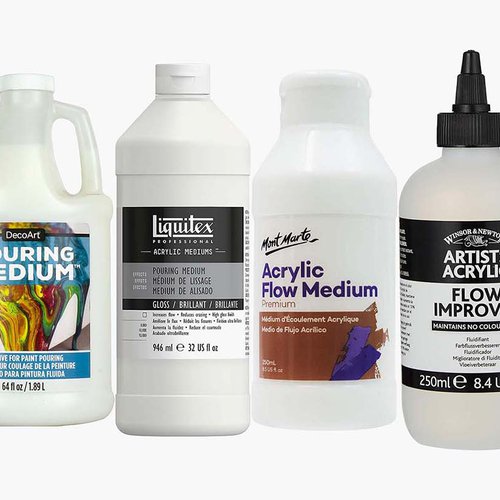





Be the first to comment!
Comments
There are no comments yet.